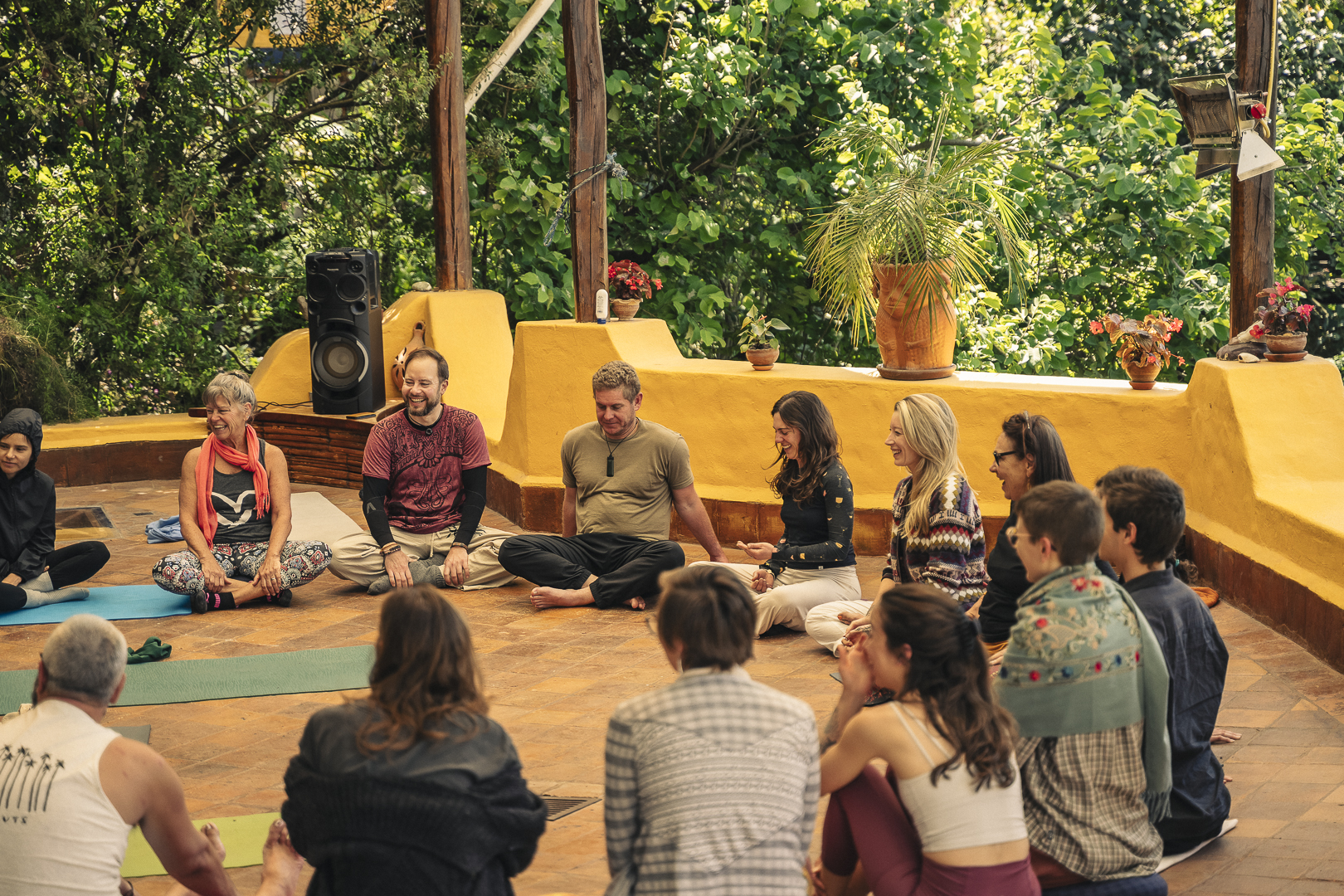Contents
- What Is Free Love in Tantra? A Conscious Approach to Freedom and Relationships
- What Is Tantra?
- The Three Tantric Keys: Breath, Movement, Sound
- Free Love: The Tantric Definition
- The Shadow Side of Polyamory
- Sacred Sexuality in Tantric Communities
- Tantra and the Chakras: Love Beyond Romance
- Tantra and Parenthood: When Monogamy Serves
- Truthfulness in Relationships
- Final Reflections: The Dance of Love and Freedom
What Is Free Love in Tantra? A Conscious Approach to Freedom and Relationships
Free love is often misunderstood in today’s world—reduced to casual encounters or open relationships without emotional depth. But in the world of Tantra, free love takes on a much deeper and more sacred meaning. It’s not about the number of lovers you have. It’s about conscious choice, emotional responsibility, and spiritual connection.
At Durga’s Tiger School in Ecuador, we teach Tantric Yoga, Shamanism, and the arts of sacred sexuality. In this blog post, based on our Tantra podcast episode with Iris D, we explore what free love really means through the lens of Tantra. Whether you’re practicing monogamy, polyamory, or celibacy, the question is: Are you loving with presence, truth, and awareness?
What Is Tantra?
Let’s begin with a foundational understanding: Tantra is not just a sexual practice. It’s a spiritual path that integrates the body, breath, energy, and emotions to awaken our consciousness. At its heart, Tantra invites us to meet life—and love—with full presence.
A key teaching in Tantra is the union of Shiva and Shakti. Shiva represents stillness and pure awareness, while Shakti is the vibrant, creative life force. In every Tantric practice, including lovemaking, Shiva and Shakti energies are invited to dance together—within us and with others.
The Three Tantric Keys: Breath, Movement, Sound
Every Tantric ritual or practice begins with the three Tantric keys:
- Conscious breathing to bring awareness into the body
- Movement to awaken energy
- Sound to express and release emotion
This trinity of breath, movement, and sound opens a gateway into presence—where love can become a sacred act rather than a conditioned habit.
Free Love: The Tantric Definition
In modern society, the term free love often implies sexual freedom—multiple partners, open relationships, or rejection of monogamy. But Tantric free love isn’t defined by how many lovers you have. It’s about aligning your relationships with your deepest inner truth.
For some, freedom may mean a monogamous relationship built on sacred commitment. For others, it may be a period of celibacy, spiritual devotion, or nature-based intimacy. And for some, freedom means exploring polyamory—multiple loving relationships approached with depth and presence.
The key is this: Are you choosing your path out of conscious desire—or are you escaping intimacy and emotional growth?
The Shadow Side of Polyamory
In Tantra, polyamory is not rejected—it’s honored as one of many valid paths. But it’s not without its challenges. Multiple relationships often activate old wounds: jealousy, abandonment, insecurities, and ancestral patterns.
Many people enter polyamory seeking freedom, but end up avoiding depth. True freedom means taking responsibility for your emotions, your communication, and the energetic consequences of your choices.
Tantra invites you to ask:
- Am I truly open to love—or just afraid of commitment?
- Am I clear in my relationship agreements?
- Do I honor every partner with full presence?
Sacred Sexuality in Tantric Communities
Ancient Tantric communities practiced sacred sexuality through rituals, not casual encounters. These were intentional, heart-centered spaces where lovers prepared energetically and emotionally before engaging in union. Some rituals included circular lovemaking, where each man and woman met in meditative connection—not for orgasm, but for energetic communion.
In these sacred spaces, sexuality wasn’t separated from spiritual practice. Instead, it was used to awaken Kundalini energy, expand consciousness, and open the heart.
This is conscious sex—where breath, intention, and energy align.
Tantra and the Chakras: Love Beyond Romance
In Tantra, we explore love through the chakra system. We don’t only love with the heart (Anahata chakra). We also engage the:
- Root chakra for grounding and safety
- Sacral chakra for pleasure and connection
- Solar plexus for personal will and integrity
A Tantric lover is one who brings awareness to all these centers—moving beyond fantasy into truth. This kind of love is not about romance or fairy-tale ideals. It’s about full-spectrum presence.
Tantra and Parenthood: When Monogamy Serves
Interestingly, Tantra also acknowledges that monogamy may serve a purpose—especially during parenthood. In the early years of raising a child, creating a stable bond between parents provides emotional safety for the child. Hormonal bonding, emotional nesting, and shared energy form a cocoon that supports the entire family system.
This isn’t a moral judgment—it’s a reflection of energy flow and responsibility.
Truthfulness in Relationships
One of the most radical acts of love in Tantra is truth-telling. If you desire someone new, bring it to the table before acting on it. If you’re struggling with your relationship agreement, speak it aloud.
Hiding or lying poisons the energy field of your relationship. Even if your partner doesn’t know consciously, they’ll feel it. Illness, disconnection, and emotional breakdowns often follow.
Tantric communication is brave, honest, and rooted in love.
Final Reflections: The Dance of Love and Freedom
Tantra teaches that freedom is not the absence of boundaries—but the conscious choice of them. Love is not the absence of pain—but the willingness to grow through it.
Your path may include:
- A committed partner
- Polyamorous exploration
- Spiritual celibacy
- Sexual rituals within community
As long as you act with consciousness, honesty, and love, your relationships become a sacred path.
You’ll never be “done.” The process is infinite. But Tantra offers moments of grace—where you feel completely free, deeply connected, and fully alive. And that, perhaps, is the real definition of Tantric free love.
You can listen to our podcast HERE







